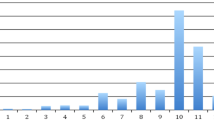Abstract
Studies of temporary migration in developing countries often focus on rural outmigration and are preoccupied with problems it may bring to cities. Using a unique data set from two surveys conducted in Zhejiang province, China, this paper examines the other side of the coin — temporary migration from urban places — and thereby provides an important complement to studies focusing on rural-urban migration. The analysis identifies three types of temporary migrations: on-business, economic, and family-related. Using multinomial logit model, the analysis suggests that the three types of temporary migration differ significantly from each other in both their causes and migrants' socioeconomic characteristics; so does urban-urban migration from urban-rural migration. The considerable urban-rural temporary migration attests to the fact that temporary migration is not a one-way process; its positive selectivity further indicates that a considerable human capital flows from urban to rural areas through urban-rural temporary migration, which provides rural areas much needed science and technology and becomes an important facilitating factor of rural socioeconomic development.
Similar content being viewed by others
References
Chapman, M. and Prothero, R. M. (1977). Circulation between home places and towns: A village approach to urbanization. Paper presented at Association for Social Anthropology in Oceania, Monterrey, California.
Chapman, M. and Prothero, R. M. (1983). Themes on circulation in the third world,International Migration Review 17: 597–632.
Connell, J. et al. (1976).Migration from rural areas. New Delhi, India: Oxford University Press.
Courgeau, D. (1983).Study on the dynamics, evolution, and consequences of migration-II: Three centuries of spatial mobility in France. Paris: UNESCO.
Goldstein, S. (1978).Circulation in the context of total mobility in Southeast Asia. Honolulu: East-West Institute.
Goldstein, S. & Goldstein, A. (1991).Permanent and temporary migration differentials in China. Honolulu: East-West Institute.
Gray, J. & Gordon, W., eds. (1982).China's new development strategy. New York: Academic Press.
Guest, M. (1989).Labor allocation and rural development. Boulder, CO: Westview Press.
Harbison, S. F. (1981). Family structure and family strategy in migration decision making, pp. 225–251, in: G. De Jong & R. Gardner (eds.),Migration decision making. New York: Pergamon Press.
Hetler, C. B. (1986). Female-headed households in a circular migration village in central Java, Indonesia. Ph.D. dissertation, Australian National University.
Hugo, G. J. (1975). Demographic research in Indonesia: A review. Working Paper, Australian National University, Department of Demography.
Hugo, G. J. (1978).Population mobility in West Java. Yogyakarta, Indonesia: Gadjah Mada University Press.
Hugo, G. J. (1982). Circular migration in Indonesia,Population and Development Review 8: 59–83.
Hugo, G. J. et al. (1987).The demographic dimension in Indonesian development. New York: Oxford University Press.
Johnson, G. D. (1988). Economic reforms in the People's Republic of China,Economic Development and Cultural Change 36 (Supplement): s225-s245.
Leinbach, T. R. & Suwarno, B. (1985). Commuting and circulation characteristics in the intermediate sized city: The example of Medan, Indonesia,Singapore Journal of Tropical Geography 6: 35–47.
Lerman, C. (1983). Sex-differential patterns of circular migration: A case study of Semarang, Indonesia,Peasant Studies 10: 251–269.
Mantra, I. B. (1981).Population movement in central Java. Yogyakarta, Indonesia: Gadjah Mada University.
Mitchell, J. C. (1969). Structural plurality, urbanization and labor circulation in Southern Rhodesia, pp. 156–180, in: J. A. Jackson (ed.),Migration. Cambridge: Cambridge University Press.
Nelson, J. M. (1976). Sojourners versus new urbanites: Causes and consequences of temporary versus permanent cityward migration in developing countries,Economic Development and Cultural Change 24: 721–757.
Prothero, R. M. & Chapman, M., eds. (1985).Circulation in third world countries. Boston: Routledge & Kegan Paul.
Simmons, A. B., Diaz-Briquets, S. & Laquian, A. A. (1977).Social change and internal migration: A review of research findings from Africa, Asia, and Latin America. Ottawa: International Development Research Center.
Skeldon, R. (1985). Circulation: A transition in mobility in Peru, pp. 100–120, in: R. M. Prothero and M. Chapman (eds.),Circulation in third world countries. Boston: Routledge & Kegan Paul, 1985.
Speare, A., Jr. and Harris, J. (1986). Education, earnings, and migration in Indonesia,Economic Development and Cultural Change 34: 223–244.
SSB (State Statistics Bureau) (1988).Zhongguo tongji nianjian (China Statistical Yearbook). Beijing, China: International Center for the Advancement of Science Technology Ltd. and China Statistical Information & Consultancy Service Center.
Stark, O. and Levhari, D. (1982). On migration and risk in LDCs,Economic Development and Cultural Change 31: 191–196.
Wang, S. and Xu, T. (1988). Renkou huodong de shehui jingji tiaojian he ziran huanjing (The natural environment and socioeconomic conditions for human activities), pp. 6–31, in: S. Wang and R. Wang (eds.),Zhongguo renkou: Zhejiang fenche (China's population: Zhejiang volume). Beijing: Finance and Economics Publisher.
Yang, X. (1993). Household registration, economic reform, and migration,International Migration Review 27: 796–818.
Zelinsky, W. (1971). The hypothesis of the mobility transition,Geographical Review 61: 219–249.
Zelinsky, W. (1979). The demographic transition: Changing patterns of migration,IUSSP conference of science in the service of mankind Liège, Belgium: IUSSP.
Zhejiang Census Office (1984).Zhejiang sheng di sanci renkou pucha tongji huibian (Zhejiang province third census data compilation). Hangzhou, China: Zhejiang Census Office.
ZPSB (Zhejiang Provincial Statistics Bureau) (1988).Zhejiang tongji nianjian (Zhejiang statistical yearbook). Hangzhou, China: Zhejiang People's Publisher.
Author information
Authors and Affiliations
Rights and permissions
About this article
Cite this article
Yang, X. Urban temporary out-migration under economic reforms: Who moves and for what reasons?. Popul Res Policy Rev 13, 83–100 (1994). https://doi.org/10.1007/BF01074323
Issue Date:
DOI: https://doi.org/10.1007/BF01074323




